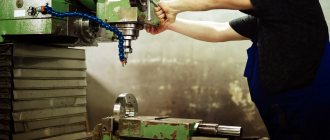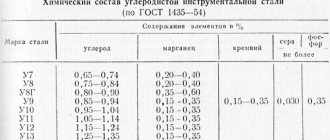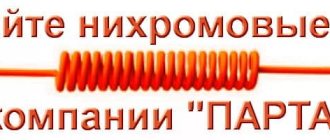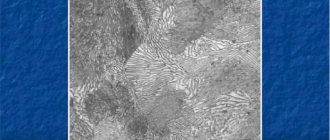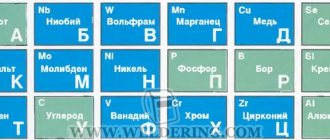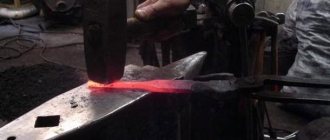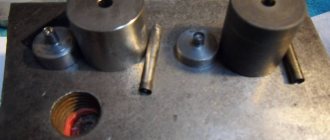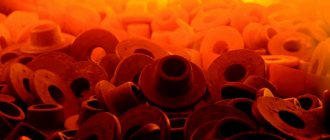General characteristics of steel
Metallurgists determine the condition for the existence of steel - this is the presence in the mechanical mixture of iron and carbon of no more than 2.14% C. Alloys with a high concentration are called cast iron.
Of all the metals, the alloy of iron and carbon has the most attractive properties. This material is used to make:
- vehicle bodies, transmissions and power units;
- metal frames, reinforcement and other systems that ensure the strength of buildings;
- tools, machine components and mechanisms.
The versatility of using steel is explained by the wide possibilities in regulating its properties. They can be adjusted to adapt to create devices that perform different tasks. Even the best weapons are made using this versatile metal.
To date, several thousand steel variants have been developed. But in real practice, about a dozen basic types are more often used, the rest are created to solve special problems. They are used quite rarely.
General concepts about steel grades
In the CIS, the applied designation standards are characterized by the fact that they can be used to indicate the main elements. When considering the issue of decoding the brand, we note the following points:
- The abbreviation “St” is often used. In other cases, no abbreviations are used at all, only numbers.
- In most cases, the first number indicates the carbon concentration. The following can be used to indicate the amount of alloying components.
- The composition may include alloying components that significantly change the properties of the material. An example is the inclusion of chromium, which increases resistance to high humidity.
Classification of steels by purpose
Labeling is deciphered using tables that indicate the designation of the chemical element.
What does the steel marking mean?
It has become quite easy to decipher the brand; you just need to have certain information. Structural steels of ordinary quality and not containing alloying elements are marked with the letter combination “St”. By the number following the letters in the name of the brand, you can determine how much carbon is in such an alloy (calculated in tenths of a percent). The numbers may be followed by the letters “KP”: from them it becomes clear that this alloy has not completely gone through the deoxidation process in the furnace, and accordingly, it belongs to the boiling category. If the brand name does not contain such letters, then the steel corresponds to the calm category.
Chemical composition of carbon structural steels of ordinary quality
Structural unalloyed steel, which belongs to the quality category, has two numbers in its designation; they are used to determine the average carbon content in it (calculated in hundredths of a percent).
Before we begin to consider the grades of those steels that include alloying additives, you should understand how these additives are designated. Marking of alloy steels may include the following letter designations:
List of alloying additives used
Pros and cons of carbon structural steel
The advantages of such a metal become obvious after the products undergo heat treatment. Therefore, during the production process they are exposed to temperature in order to exhibit the following advantages:
- Hardening and tempering make it possible to increase the resistance of the material to plastic deformation. As a result, this indicator of carbon structural steel becomes higher than that of carbon alloys with equal carbon content.
- Under identical conditions, structural steel is calcined more strongly than carbon steel. Because of this, external elements with significant thickness are recommended to be made of structural steel with alloying additives. Thanks to the composition, the part is calcined through.
- Heat treatment of such steel can be carried out using so-called “soft” coolants, that is, oil. Using this approach, the likelihood of cracking and warping during the hardening process is seriously reduced.
- After heat treatment and alloying, the toughness and cold brittleness threshold of structural steel increases. Therefore, equipment containing parts made of this metal is considered more reliable.
However, carbon structural steel also has negative properties.
:
- Most products made from it are subject to reversible temper embrittlement.
- Under the influence of temperature, steel loses its original hardness and fatigue resistance.
- Forging and rolling lead to the fact that the structure of products changes to stitching. In deformation zones, they lose their uniformity, which makes the metal difficult to cut.
- Carbon structural steels alloyed with nickel are characterized by the formation of flakes, that is, light spots in the fracture. They appear when hydrogen dissolved in the metal escapes. In cross section, such defects look like cracks diverging in different directions.
Why do you need to know the decoding of steel grades?
Anyone whose work is related to metals has had to deal with the concept of “steel grade”. Decoding the markings allows you to find out the chemical composition and physical properties of the alloy. Although at first glance the marking may seem quite complex, it is easy to understand. To do this, you need to understand the principle of its composition.
For such a brief description of the alloy, letters and numbers are used to indicate the chemical elements and their quantities. This means that for competent work with steels, it is important to know the abbreviations themselves and how each element changes the properties of the finished alloy. Then it will be possible to determine with utmost precision what technical characteristics a certain grade of steel has.
Having received an order for a product, designers develop a design and also select the most suitable steel grades for a particular case, based on decoding their properties. The device being created must function under certain conditions, so it is examined during movement - this is how it is possible to understand which parts will experience increased loads.
To establish requirements for the strength of elements, calculations are made. At the next stage, the metal is selected in accordance with steel grades according to GOST, which can withstand repeated loading and friction. The greater the load the product experiences, the more limited the designer is in choosing the material. Next, a prototype of the device is made from the selected metal and tested in accordance with the methods used in a particular area. At this stage, the steel grade can be changed. Let us note that most often steel is used for the manufacture of machines, devices and complex mechanisms.
We recommend articles on metalworking
- Steel grades: classification and interpretation
- Aluminum grades and areas of their application
- Defects in metal products: causes and search methods
Regardless of the specific area, working with metals requires an understanding of their grades, purposes and other characteristics displayed in the index. Thanks to the numbers and letters used in the code, it is possible to quickly understand the characteristics of the metal without requiring additional clarification. This article outlines the fundamental principle of classification, as well as a simple way to read the markings of the steels most common in production.
Types and grades of non-magnetic steels
If the origin of the product is known, the reaction with a magnet can roughly determine the type of stainless steel. The following brands are not magnetic:
- AISI 409 (analogue 08X13) - containers for cargo transportation, parts for the exhaust system of a car, etc. are made from this ferritic steel. (plasticity and lack of magnetic properties are due to the extremely low C content - less than 0.03%);
- AISI 304 (analogous to 8-12X18H10) - household items are made from it, as well as utensils and equipment for the food and pharmaceutical industries;
- 12Х21НБТ (ЭИ8П) – austenitic-ferritic steel for use in medium-aggressive environments, from which containers and equipment for the chemical and pharmaceutical industries are produced.
Stainless steel grades AISI 402–420, which contain from 11 to 14% chromium and less than 0.07% carbon, are not magnetic.
Types of steels and features of marking
Steel is an iron-carbon alloy, the amount of which does not exceed 2.14%. The carbon component is necessary to achieve hardness, but it is extremely important to monitor its concentration. If it exceeds 2.2%, the metal will become very brittle, making it almost impossible to work with.
By adding any alloying elements, the required characteristics can be achieved. It is by combining the type and volume of additives that grades are obtained that have better mechanical properties and resistance to corrosion. Of course, quality indicators can be improved through heat treatment, but the use of alloying additives significantly speeds up this process.
The basic classification criteria are the following indicators.
- Chemical composition.
- Purpose.
- Quality.
- Structure.
- Degree of deoxidation.
- Steels according to their chemical composition into carbon and alloy. Based on the mass fraction of carbon, both the first and second groups of steels are divided into: low-carbon (less than 0.3% C), medium-carbon (C concentration is in the range of 0.3-07%), high-carbon - with a carbon concentration of more than 0.7%.
Alloyed steels are those that contain, in addition to permanent impurities, additives introduced to increase the mechanical properties of this material.
Chromium, manganese, nickel, silicon, molybdenum, tungsten, titanium, vanadium and many others are used as alloying additives, as well as a combination of these elements in various percentages. Based on the number of additives, steels are divided into low-alloy (alloying elements less than 5%), medium-alloy (5-10%), and high-alloy (contain more than 10% additives).
- According to their purpose, steels are classified as structural, instrumental and special-purpose materials with special properties.
The most extensive class are structural steels , which are intended for the manufacture of building structures, parts of devices and machines. In turn, structural steels are divided into spring-type, improved, cemented and high-strength.
Tool steels are distinguished depending on the purpose of the tool produced from them: measuring, cutting, hot and cold deformation dies.
Special-purpose steels are divided into several groups: corrosion-resistant (or stainless), heat-resistant, heat-resistant, electrical.
- According to the quality of steel, there are ordinary quality, high-quality, high-quality and especially high-quality.
The quality of steel is understood as a combination of properties determined by the process of its manufacture. Such characteristics include: uniformity of structure, chemical composition, mechanical properties, manufacturability. The quality of steel depends on the content of gases in the material - oxygen, nitrogen, hydrogen, as well as harmful impurities - phosphorus and sulfur.
- According to the degree of deoxidation and the nature of the solidification process, steels are calm, semi-calm and boiling.
Deoxidation is the operation of removing oxygen from liquid steel, which provokes brittle fracture of the material during hot deformation. Mild steels are deoxidized with silicon, manganese and aluminum.
- According to their structure, steels are divided into annealed (equilibrium) and normalized states. Structural forms of steels are ferrite, pearlite, cementite, austenite, martensite, ledeburite and others.
By chemical composition
Based on their chemical composition, steels are divided into carbon steels, used under standard operating conditions, and alloy steels, used at high temperatures and/or in aggressive environments. Carbon and alloy steels are classified according to carbon content into the following types:
- low carbon – contain less than 0.3% C;
- medium-carbon – C content in the range of 0.3-0.7%;
- high-carbon – the proportion of carbon exceeds 0.7%.
The percentage significantly affects the technical characteristics of both alloyed and unalloyed steel alloys. The larger it is, the higher the hardness and fragility of the material, the worse the machinability, weldability, and ability to deform. For cold stamping of products with complex shapes, alloys are selected in which the C content does not exceed 1%. Low-carbon steels can be welded without restrictions, that is, they do not require preheating or special cooling conditions. When welding medium- and high-carbon alloys, additional technological operations are used to avoid cracking.
Carbon steels contain iron, carbon, permanent and random impurities; alloyed, in addition to these components, are additives that provide the required technical characteristics. Common alloying elements and their effects:
- Chromium (Cr) . A cheap and widespread element, the introduction of which into the composition of steel alloys increases their strength, hardness and hardenability. When contained in an amount of 13% or more, the corrosion resistance of the material is increased.
- Nickel (Ni) . A deficiency additive, usually introduced in an amount of no more than 5%. Often used in corrosion-resistant steels in conjunction with chromium. Serves to reduce the threshold of cold brittleness, ensure strength and toughness. Provides a low linear and volumetric coefficient of thermal expansion. Currently, attention is being paid to the development of nickel-free corrosion-resistant grades.
- Molybdenum (Mo) and tungsten (W) . Expensive alloys used in the production of high-speed steels to increase their heat resistance. These elements increase red resistance, wear resistance, and impact strength.
- Manganese (Mn) . In amounts up to 0.6% it is a permanent impurity. When the percentage is artificially increased, manganese acts as a cheaper alternative to nickel. It improves toughness, wear resistance and hardness while maintaining good ductility. Mn binds sulfur and thereby neutralizes its negative impact on the quality of the material. The disadvantage of manganese is that the alloy is more sensitive to overheating.
- Silicon (Si) . Like manganese, it is a constant impurity in amounts up to 0.4%. Artificially increasing its content makes it possible to increase the elasticity and strength of the material. A high percentage of Si gives the alloy special properties required in the electrical industry, in the production of spring-type, acid- and scale-resistant grades.
- Titanium (Ti) . Provides a complex of valuable performance characteristics - strength, hardness and ductility, increases the heat resistance of the material.
Classification of alloy steel grades by the number of alloying additives:
- low alloyed – up to 5%;
- alloyed – 5-10%;
- highly alloyed – above 10%.
Classification by purpose
The classification of steel types by purpose has already been given above. Marking of structural steels includes the following designations:
- Construction - denoted by the letter C and numbers characterizing the yield strength.
- Bearing - designated by the letter Ш. Next comes the designation and content of alloying additives, mainly chromium.
- Instrumental unalloyed - denoted by the letter U and carbon content in tenths of a percent.
- High-speed - denoted by the letter P and symbols of alloying components.
- Unalloyed structural steel has the symbols Cn and a number indicating the carbon content in tenths or hundredths of a percent.
Classification of steel by purpose
The remaining varieties, including tool grades made of alloy steels, do not have special designations other than their chemical composition, so the decoding and purpose of individual types can only be determined from reference literature.
Quality classification
Various grades of alloys contain foreign impurities. These are mainly substances such as phosphorus, sulfur, unbound oxygen, and nitrogen. All of them negatively affect the performance characteristics of the metal.
How exactly do such impurities affect the quality of the alloy?
- Phosphorus gives the metal cold brittleness and reduces its ductility.
- Sulfur causes cracking at high heating temperatures.
Depending on the impurity content, the metal quality indicator is established:
- ordinary steel is distinguished by a significant amount of impurities of 0.06–0.07% sulfur and phosphorus;
- a high-quality alloy has a proportion of impurities of no more than 0.035%;
- high-quality steel with a high degree of purification from unwanted inclusions - 0.025%;
- especially high-quality steel contains sulfur up to 0.015%, phosphorus - 0.02%.
Purpose
Structural, intended for the manufacture of construction and engineering products.
Tools, from which cutting, measuring, stamping and other tools are made. These steels contain more than 0.65% carbon.
With special physical properties, for example, with certain magnetic characteristics or a low coefficient of linear expansion: electrical steel, superinvar.
With special chemical properties, for example stainless, heat-resistant or heat-resistant steels.
Principles of classification and marking of steel according to the Russian system
The presence of standardized indicators from Russia makes it possible to establish the composition of the metal and partly its species. If the volume of steel material exceeds 1%, then its amount on the marking mark is not taken into account. It includes the letters of alloying additives, where their volume is indicated in tenths and hundredths of a percentage. However, if the concentration is more than 1.5%, then the presence of letter designations is mandatory. In addition to chem. composition, the marking contains special symbols reflecting the purpose of the steel and its quality.
In Russia, alphanumeric markings are used, the specific type of which depends on the quality of the alloy.
- Ordinary quality steels are designated by the letters st, after which the grade index (0-6) and the level of deoxidation are indicated. Sp - calm, ps - semi-calm, kp - boiling. The letter A may appear in front (the alloy has guaranteed mechanical parameters, it is often placed on it), B - with a guaranteed chemical composition, C - with guaranteed mechanical characteristics and chemical composition. Example: St3 – steel of ordinary quality with guaranteed mechanical properties and conditional index 3, for which the carbon content is 0.14-0.22%.
- In high-quality steels, there are no letters at the beginning of the markings. The amount of carbon is indicated in hundredths of a percent. At the end, the deoxidation level is set. Example: 08kp. Carbon content – 0.08%.
- High-quality tool steels have the letter U at the beginning of the marking, followed by the amount of C in hundredths of a percent. At the end of the designation of a high-quality alloy, the letter A is placed. For example, the marking U7A stands for high-quality carbon steel with a carbon content of 0.07%.
- In high-speed steels, the marking begins with the letter P, after which the amount of tungsten is indicated as a percentage. For example, P17 is a high-speed alloy containing 17% W.
- In structural alloy steels, the carbon content is indicated in hundredths of a percent. Next, the symbol of the elements and their content in percentages is indicated. Example: 12Х18Н10Т. This steel contains 0.12% carbon, chromium - 18%, nickel - 10%, titanium - approximately 1%.
Chemical composition.
Steels are usually called alloys of iron and carbon containing up to 2.14% carbon.
Depending on the chemical composition, carbon steels (GOST 380-71, GOST 1050-75) and alloy steels (GOST 4543-71, GOST 5632-72, GOST 14959-79) are distinguished. In turn, carbon steels can be:
- low-carbon, i.e. containing less than 0.25% carbon;
- medium-carbon, carbon content is 0.25-0.60%;
- high-carbon, in which the carbon concentration exceeds 0.60%.
Alloy steels are divided into:
| Table of elements MS Word, 40Kb |
- low alloy content of alloying elements up to 2.5%;
- medium alloyed, they contain from 2.5 to 10% alloying elements;
- highly alloyed, which contain over 10% alloying elements.
Foreign standards
Manufacturers in the Russian Federation and post-Soviet countries use labeled methods, thanks to which you can at least roughly understand the composition, purpose and technical properties without the use of special literature. American and European production, on the contrary, does not use this practice. This is due to the many companies that are qualified to standardize metal products.
Most often, European countries and America do not apply a chemical composition to the outer surface, and steel varieties are characterized by letters and numbers. However, to decipher this abbreviation you will need to use reference books or other literature.
For corrosion-resistant steels in Europe and America, the AISI marking system is often used. It requires three numbers and one or more letters. The first digit in the metal marking indicates the steel class. The next two digits correspond to the serial number of the alloy in the group. Meaning of letters used in marking steel alloys:
- carbon content less than 0.03%;
- C content within 0.03-0.08%;
- the alloy contains nitrogen;
- low carbon steels containing nitrogen;
- high concentration of sulfur and phosphorus;
- contains selenium, B – silicon, Cu – copper.
Other labeling systems may be used in the United States. In Europe there is a system that is in many ways similar to the Russian labeling system. Carbon content is indicated in hundredths of a percent. The differences are that alloying elements are listed first, and then their percentages follow in the same order; alloys are indicated in accordance with the periodic table. If any element is present in an amount of more than 5%, then the letter X is placed before the marking. For example: X5CrNi18-10. This steel contains 0.05% carbon, 18% chromium and 10% nickel.
Table of designations of alloy steels in different marking systems
| US Standard ASTM A240 | European standards EN 10088-2 and EN 10095 | Russian standard GOST 5632-2014 | Chemical composition, % | ||||
| Cmax | Cr | Ni | Mo | Ti | |||
| Austenitic class | |||||||
| Corrosion resistant | |||||||
| AISI304 | 1.4301 | 12Х18Н9 | 0,07 | 17-19 | 8-10 | ||
| AISI 304DDQ | 1.4301 | 08Х18Н10 | 0,07 | 17-19 | 9-10 | ||
| AISI 304L | 1.4307 | 04Х18Н10 | 0,03 | 18-19 | 8-10 | ||
| AISI 316 | 1.4401 | 03Х17Н14М2 | 0,03 | 16,5-18,5 | 10-13 | 2-2,5 | |
| AISI 316L | 1.4432 | 03Х17Н14М3 | 0,03 | 16,5-18,5 | 10,5-13 | 2,5-3 | |
| AISI 316Ti | 1.4571 | 08Х17Н13М2Т | 0,08 | 16,5-18,5 | 10,5-13,5 | 2-2,5 | 5*C-0.7 |
| AISI 321 | 1.4541 | 12Х18Н10Т | 0,08 | 17-19 | 9-12 | 5*C-0.7 | |
| Heat resistant and heat resistant | |||||||
| AISI 309S | 1.4833 | 20Х23Н13 | 0,15 | 22-24 | 12-14 | ||
| AISI 310 S | 1.4845 | 20Х23Н18 | 0,10 | 24-26 | 19-22 | ||
| Ferritic class | |||||||
| Corrosion resistant steel alloys | |||||||
| AISI 410S | 1.4000 | 08Х13 | 0,08 | 12-14 | |||
| AISI 430 | 1.4016 | 12Х18 | 0,12 | 16-18 | |||
| AISI 430Ti | 1.4510 | 08Х17Т | 0,08 | 16-18 | Up to 0.8 | ||
| AISI 409 | 1.4512 | 08Х13 | 0,08 | 0,5-11,75 | |||
| Martensitic class | |||||||
| Corrosion resistant steel alloys | |||||||
| AISI 410 | 1.4006 | 12Х13 | 0,08-0,15 | 11,5-13,5 | |||
| AISI 420L | 1.4021 | 20Х13 | 0,16-0,25 | 12-14 | |||
| AISI 420 | 1.4028 | 30Х13 | 0,26-0,35 | 12-14 | |||
| AISI 420 | 1.4031 | 40Х13 | 0,36-0,42 | 12,5-14,5 | |||
| AISI 420 | 1.4034 | 45x13 | 0,43-0,5 | 12,5-14,5 | |||
Spectral analysis of metals
This is a modern method that allows you to find out the structure of almost any mineral or finished product based on analyzed physical properties, in particular, reflection, emission, luminescence, etc. The fact is that atoms of different substances emit special wave elements characteristic only of one. They have their own length, frequency, etc. Therefore, only the wave nature of the sample can be taken into account in order to accurately determine what additives are in its composition. And for this they use a spectral determinant of steel grade. This is the device that performs this analysis. It is available in almost all industries, but can also be used in everyday life, since it does not require any special skills to use.
But there are nuances. For example, it is important to take into account the fact that during burning (as the sampling process is terminologically called), only the top layer of a few mm is determined, so it is very important that the entire bar (rod) is made of a homogeneous material. It is also worth knowing that there are four types of spectral analysis:
- Emissive – registers waves emitted by a substance.
- Absorption – takes into account how much it absorbs.
- Luminescent - determines whether additives can glow or emit light.
- Raman - focuses on the scattering of light and the excitation of molecular vibrations.
This method is very widely used in laboratories, as well as in large industries. The device uses a high-temperature spark or electric arc plasma (more than 10,000 K) as a light source, which is generated by an external storage device. Only after such excitation from the outside do atoms begin to emit their own waves, and conclusions can be drawn based on their length and features.
International similar options for corrosion-resistant and heat-resistant steels
You can get acquainted with their varieties using tables of markings of steels, ferrous metals and alloys with explanations and examples posted below.
Corrosion-resistant steels
| Europe (EN) | Germany (DIN) | USA (AISI) | Japan (JIS) | CIS (GOST) |
| 1.4000 | Х6Сr13 | 4105 | SUS 410 S | 08X13 |
| 1.4006 | X12CrN13 | 410 | SUS 41O | 12X13 |
| 1.4021 | X29Cr13 | (420) | SUS 420 J1 | 2OX13 |
| 1.4028 | X39Cr13 | (420) | SUS 420 J2 | 30X13 |
| 1.4031 | X46Cr13 | SUS 420 J2 | 40X13 | |
| 1.4034 | X46Cr17 | (420) | 40X13 | |
| 1.4016 | X6Cr17 | 430 | SUS 430 | 12X17 |
| 1.4510 | X3CrTi17 | 439 | SUS 430 LX | 08X17T |
| 1.4301 | X5CrNl18-10 | 304 | SUS 304 | 08X18H10 |
| 1.4303 | X4CrNi18-12 | (305) | SUS 305 | 12X18H12 |
| 1.4306 | X2CrNi19-11 | 304 L | SUS 304 L | 03X18H11 |
| 1.4541 | X6CrNiTi18-10 | 321 | SUS 321 | 08X18H10T |
| 1.4571 | X6CrNiMoTi17-12-2 | 316 Ti | SUS 316 Ti | 10X17H13M2T |
Heat-resistant brands
| Europe (EN) | Germany (DIN) | USA (AISI) | Japan (JIS) | CIS (GOST) |
| 1.4878 | X12CrNiTi18-9 | 321H | 12X18H10T | |
| 1.4845 | X12CrNi25-21 | 310 S | 20X23H18 |
High speed grades
| steel grade | Analogues in US standards | ||
| CIS countries GOST | Euronorms | ||
| RO M2 SF10-MP | — — | A11 | |
| R2 M9-MP | S2-9-2 1.3348 | M7 | |
| R2 M10 K8-MP | S2-10-1-8 1.3247 | M42 | |
| R6 M5-MP | S6-5-2 1.3343 | M2 | |
| R6 M5 K5-MP | S6-5-2-5 1.3243 | — | |
| R6 M5 F3-MP | S6-5-3 1.3344 | M3 | |
| R6 M5 F4-MP | — — | M4 | |
| R6 M5 F3 K8-MP | — — | M36 | |
| R10 M4 F3 K10-MP | S10-4-3-10. 1.3207 | — | |
| R6 M5 F3 K9-MP | — — | M48 | |
| R12 M6 F5-MP | — — | M61 | |
| R12 F4 K5-MP | S12-1-4-5 1.3202 | — | |
| R12 F5 K5-MP | — — | T15 | |
| R18-MP | — — | T1 | |
Structural
| steel grade | Analogues in US standards | ||
| CIS countries GOST | Euronorms | ||
| 10 | C10E 1.1121 | 1010 | |
| 10ХГН1 | 10 HGN1 1.5805 | — | |
| 14 ХН3 М | 14 NiCrMo1-3-4 1.6657 | 9310 | |
| 15 | C15 E 1.1141 | 1015 | |
| 15G | C16 E 1.1148 | 1016 | |
| 16ХГ | 16 MnCr5 1.7131 | 5115 | |
| 16HGR | 16Mn CrB5 1.7160 | — | |
| 16ХГН | 16NiCr4 1.5714 | — | |
| 17 G1 S | S235J2G4 1.0117 | — | |
| 17 ХН3 | 15NiCr13 1.5752 | E3310 | |
| 18 CGN | 18CrMo4 1.7243 | 4120 | |
| 18 X2 N2 M | 18CrNiMo7-6 1.6587 | — | |
| 20 | C22E 1.1151 | 102— | |
Basic range of stainless steel grades
| CIS (GOST) | Euronorms (EN) | Germany (DIN) | USA (AISI) |
| 03 X17 N13 M2 | 1.4404 | Х2 CrNiMo 17-12-2 | 316 L |
| 03 X17 H14 M3 | 1.4435 | X2 CrNiMo 18-4-3 | — |
| 03 X18 H11 | 1.4396 | X2 CrNiMo 19-11 | 304 L |
| 03 X18 H19 T-U | 1.4541-MOD | — | — |
| 06 XH28 MDT | 1.4503 | X3 NiCrCuMoTi 27-23 | — |
| 06 X18 H11 | 1.4303 | X4 CrNi 18-11 | 305L |
| 08 X12 T1 | 1.4512 | X6 CrTi 12 | 409 |
| 08 X13 | 1.400 | X6 Cr 13 | 410S |
| 08 X17 H13 M2 | 1.4436 | X5CrNiMo 17-13-3 | 316 |
| 08 X17 H13 M2 T | 1.4571 | X6CrNiMoTi 17-12-2 | 316Ti |
| 08 X17 T | 1.4510 | X6 XrTi 17 | 430Ti |
| 08 X18 H10 | 1.4301 | X5 CrNi 18-10 | 304 |
| 08 X18 H12 T | 1.4541 | X6 CrNiTi 18-19 | 321 |
| 10 X23 H18 | 1.4842 | X12 CrNi 2529 | 310S |
Bearing steel
| steel grade | Analogues in US standards | |
| CIS countries GOST | Euronorms | |
| ШХ4 | 100Cr2 1.3592 | 50100 |
| ШХ15 | 100Cr6 1.3505 | 52100 |
| SHH15 SG | 100CrMn6 1.3529 | A 485 (2) |
| ШХ20 М | 100CrMo7 1.3537 | A 485 (3) |
Spring-spring
| steel grade | Analogues in US standards | ||
| CIS GOST standards | Euronorms | ||
| 38 C2 A | 38Si7 1.5023 | — | |
| 50 HFFA | 50CrV4 1.8159 | 6150 | |
| 52 HGMFA | 51CrMoV4 1.7701 | — | |
| 55 XC2 A | 54SSlCr6 1.7102 | — | |
| 55 HGA | 55Cr7 1.7176 | 5147 | |
| 60 S2 HGA | 60SiCR7 1.7108 | 9262 | |
Heat resistant steel
| steel grade | Analogues in US standards | ||
| CIS GOST standards | Euronorms | ||
| 10 X2 M | 10CrMo9-10 1.7380 | F22 | |
| 13 XM | 13CrMo4-4 1.7335 | F12 | |
| 14 HMF | 14MoV6-3 1.7715 | — | |
| 15 M | 15Mo3 1.5415 | F1 | |
| 17 G | 17Mn4 1.0481 | — | |
| 20 | C22.8 1.0460 | — | |
| 20 G | 20Mn5 1.1133 | — | |
| 20 X11 MNF | X20CrMoV12-1 1.4922 | — | |
Determination of steel grades by spark
| steel grade | Spark color | Shape of spark and stars |
| Art. 2, Art. 3 | Light yellow | There are few branches of sparks, thin threads |
| Art. 4 | There are few branches, the threads are thicker than those of Steel 2 | |
| Art. 10 | Few branches, sharp threads, few stars | |
| Art. 15 and 20 | There are more branches and stars than Steel 10 | |
| Art. 20 and 30 | There are many branches and stars, the ends of the threads are thin | |
| U12 | The stars are small and dense | |
| Art. 40 and 45 | Strong branching, dense round stars, sharp ends of the threads |
In some cases, umbrellas are equipped with lowering wings. The disadvantage of metal umbrellas is that they burn out quickly. Umbrellas made of refractory bricks are more reliable and durable (Fig. 4). However, such umbrellas are much heavier than metal ones, and their construction requires a metal frame made of corners or channels, and sometimes additional supports in the corners.
Rice. 2. Tuyere design
Portable furnaces are used to heat small workpieces. A portable forge consists of a metal frame on which a table with a hearth and a fan for air supply is mounted on top. The fan is driven by a foot pedal. You can use a blowtorch to heat the workpieces, which is placed in a small hole, and a stove made of refractory bricks is placed next to it (Fig. 5). The blanks are placed in the gap between the bricks. Or the bricks are placed on the end, a grate is placed on them, and a stove of four bricks is installed on it, into which coal is poured. A blowtorch with a pipe is placed at the bottom.
Rice. 3. Equipment for heating workpieces: stationary metal furnace (left): 1 - exhaust pipe; 2 — umbrella; 3 - water tank for cooling the instrument; 4 — lever for regulating air supply; 5 - air duct; 6 - damper; 7 — conical tip; 8 - tuyere; 9 — cast table; 10 - hearth; types of umbrellas (right): a, b - chimney in the wall; c - external side chimney; g - external central chimney
Rice. 4. Stationary forge with a brick umbrella (left): 1 - water tank; 2 - water-cooled lance; mine gas horn (right)
The design of a lightweight portable forge with a household vacuum cleaner is shown in Fig. 6. The forge pedestal is welded from corners, and the upper part of the table is lined with refractory bricks. A tuyere with an ash pan is placed on the upper horizontal corners. At a distance of 150 mm from the lance, a pipe with an internal diameter of 30 mm is welded to the ash pan, which is connected to the vacuum cleaner hose. It must be borne in mind that in this case the hose is inserted not into the lower, but into the upper (discharge) socket of the vacuum cleaner. The lower cup of the vacuum cleaner with the filter is removed, and the vacuum cleaner is placed on a stand. In cases where there is no electricity to drive the fan, bellows can be used.
Rice. 5. Portable forges with a blowtorch Fig. 6. Portable forge with vacuum cleaner
Rice. 7. Bellows
Double-action wedge bellows produce a calm blast, resulting in an even flame and the workpieces are heated evenly (Fig. 7).
In modern forges, various electrically driven fans are used for blowing.
Color coding
Color marking of steels is used to indicate rolled products. This is convenient when storing materials in warehouses and transporting them. Steels are marked with marks in the form of dots or stripes made with indelible paint. The color of the designations is selected from the table according to the purpose of the steel. In this case, the steel group and the degree of its deoxidation are not taken into account.
Example of steel color marking
Welding wire, grades, markings, diameters and consumption
Steel welding wire is a thin, long consumable material wound on a spool. It is a filler and is supplied during the welding process manually, in automatic or semi-automatic mode.
Divided into three main categories:
- Activated. One of the best, there are no voids. There are evenly spaced inclusions to provide protective properties.
- Powder. The outer layer is metal. There is powder inside.
- Solid. Made from metal with a solid cross-section. Used for gas welding.
The use of welding wire depends on the welding method, temperature and uniformity of melting, thickness, grade, qualities of the metal, requirements for the welding seam, operation of the products, for example, under the influence of external factors, etc.
The use of welding wire (solid (in a gas environment) or flux cored (without gas)) is used for the purpose of joining metals, steels containing chromium (stainless steel). The main advantages are resistance to damage, durability, corrosion resistance, low level of metal spatter, excellent seam quality. The material is selected based on the properties of the metal.
Copper-plated steel welding wire is used for thin sheets, high-alloy, carbon steels. Key benefits: fast re-ignition, reduced tip consumption, arc stability.
Aluminum wire is used for the same metals and alloys. Often used where materials may come into contact with water. Main advantages: lack of influence of corrosion, resistance to deformation, repeating the color of the part.
Steel welding wire for submerged arc or argon welding. Applies to steels:
There are more than 50 types of steel wire.
How does marking happen in practice?
Before smelting any grade of metal, the charge materials are calculated. Then the desired composition is poured into the oven, boiled and poured. All necessary elements are verified using a ladle sample in accordance with GOST or TU tables. They check for harmful impurities (they get into the melt with the charge and from the lining). If all components are within the normal range, then the melt is marked as expected.
It also happens that chemical composition standards are not met. Then the metal is marked with a different brand. The customer must be sure that he will receive exactly the products he ordered. The quality of the products depends on this. 's technical control system strictly monitors this.
Main manufacturers
Olympus Corporation
A Japanese company known for its products in the field of optics and photographic equipment. Its metal analyzers are popular because they are considered reliable in Japanese and are in the middle price segment.
The company invests money in scientific and technical development and software improvement. Delta X-act Count technology has been created for portable analyzers, thanks to which the speed and detection limits have decreased.
FPI (Focused Photonics Inc)
A Chinese company founded by graduates of prestigious American universities. It is considered one of the leaders in the production of all kinds of systems for monitoring the ecology of the environment. Their metal analyzers are also in demand.
The FPI portable metal analyzer is slightly less expensive than its main competitors.
Bruker
German company founded more than 50 years ago. Production, laboratories and representative offices are located in 90 countries. It consists of four divisions that deal with different areas. The development and production of metal analysis systems is carried out by Bruker AXS and Bruker Daltonics.
They are considered to be of high quality and are quite common in the Russian market due to the good work of their representative offices.
You need to look for them depending on your location.
Examples of decoding of some steel grades
Let’s look at the decoding of “12Х18Н10Т” (an analogue of “X12CrNiTi18-10” can be used to record the steel grade):
12Х18Н10Т is a popular austenitic steel, which is used in welding machines operating in dilute acid solutions, in solutions of alkalis and salts, as well as in parts operating under high pressure and in a wide temperature range. So, what do these mysterious symbols in the name mean, and how to combine them correctly?
The two numbers at the very beginning of the alloy steel grade are the average carbon content in hundredths of a percent. In our case, the carbon content is 0.12%. Sometimes, instead of two numbers, there is only one: it shows how much carbon (C) is contained in tenths of a percent. If there are no numbers at the beginning of the steel grade, this means that there is a fairly decent amount of carbon in it - from 1% and above.
The letter X and the number 18 following it indicate that this brand contains 18% chromium. Please note: the ratio of an element in fractions of a percent expresses only the first number at the beginning of the mark, and this only applies to carbon! All other numbers present in the name express the number of specific elements as a percentage.
Combination H10 follows. As you may have guessed, this is 10% nickel.
At the very end there is the letter T without any numbers. This means that the content of the element is too small to pay attention to. As a rule, about 1% (sometimes up to 1.5%). It turns out that in this grade of alloy steel the amount of titanium does not exceed 1.5%. If suddenly at the very end of the brand you find a modestly standing letter A, remember that it plays a very important role: this means high-quality steel, the content of phosphorus and sulfur in which is kept to a minimum. Two letters A at the very end (AA) indicate that this grade of steel is especially pure, i.e. there is practically no sulfur and phosphorus here.
In the course of a simple analysis of combinations of letters and numbers, we found out that the steel grade 12Х18Н10Т (structural cryogenic, austenitic class) reports the following information about itself: 0.12% carbon, 18% chromium (X), 10% nickel (N) and a small content titanium (T), not exceeding 1.5%.
Steel grade “09G2S” means that the metal contains:
- “09” –0.09% carbon;
- “G2” – manganese 2%;
- “C” – silicon in the range of 1–1.5%, which makes it possible not to write the corresponding number.
Steel “20YuCh” and “20YuChA” are characterized by:
- “20” – 0.2% carbon;
- “Yu” – aluminum 0.03–0.1%;
- “H” – the presence of rare earth metals, such as zirconium, titanium, calcium, cerium, necessary for the globularization of sulfide non-metallic inclusions;
- “A” indicates the high quality of the metal, as it is located at the end of the code, in other words, this steel contains no more than 0.025% sulfur and phosphorus.
How to distinguish stainless steel from aluminum?
Basic knowledge of chemistry and a little ingenuity will help you get the first information about the metal.
- Identifying differences using a magnet
The two materials in question are visually similar to each other. If, when attached to a magnet element, it does not stick, then it is definitely not aluminum (Al). The sample under study may be stainless steel, which has a negligible Ni content. If chromium or cuprum predominates in it, it will also not be magnetic and you will have to use a different technique.
- Recognition by marking
Many of the stainless products produced by domestic manufacturers contain information in the form of markings. The presence of the abbreviation “stainless steel” on them indicates that it is stainless steel and not aluminum.
- Definition using paper
The most budgetary and common method. To use it, you will need a clean, thick sheet of white paper. The technique is used for metal recognition at home. Before finding differences, it is necessary to clean the surface of the material from dirt, greasy oils and deposits. Next, using maximum pressure, you need to run a sheet of paper over the cleaned part of the metal. If it is stainless steel, there will be no traces left on the snow-white surface; if it is aluminum, gray spots will appear.
- Determination by color
It is difficult to visually determine the material of manufacture, since the 2 metals are very similar to each other. If you take a closer look at the products, you will notice a barely visible shiny tint, indicating that this is stainless steel.
A product made of (Al) with a gray or whitish tint will have a matte surface, and after grinding, an oxide film will appear.
- Metal recognition by mechanical impact
To obtain the most accurate indicators, the technique should be used in the evening or at night. Hit the metal surface with a hard object. If it is stainless steel, a pronounced spark will appear; in an aluminum product, such an effect will not be observed.
- Determination using physicochemical indicators
The thermal conductivity of aluminum is much better than that of stainless steel. An example of this is the rapid heating of a liquid under identical conditions.
Thermal conductivity (Al) is 660 degrees, for stainless steel - 1800 degrees. When reaching 700 degrees, the aluminum product will melt first. It is impossible to melt the second product yourself, without the conditions of an industrial enterprise.
- Chemical recognition methods
How to distinguish 2 identical metals - sodium or potassium hydroxide will help. Treat the surface of the product with it. If after this the metal remains unchanged, then you are dealing with stainless steel. Otherwise, it is 100% aluminum. Treating the element with copper sulfate will also allow you to determine the type of metal. If it is stainless steel, there will be no traces of chemical exposure left on it.
You can also experiment with acid, which can even be lemon juice. The effect of acid on an aluminum surface will provoke its modification, which cannot happen with stainless steel.
Steel grades for power transformers
The magnetic cores of low frequency transformers (50 Hz) are usually made of sheet electrical steel containing from 0.5 to 5% silicon (Si), up to 1% carbon (C), and the rest iron (F). Due to the fact that their losses increase significantly with increasing frequency, they are usually used within the range of no higher than audio frequencies. Grades of electrical steels produced in accordance with GOST 802-58 are designated by the letter E, which means electric steel. The first number indicates the average percentage of silicon content, the second characterizes the electromagnetic properties: number 1—normal losses, 2—reduced, 3—very small, 4—normal at 400 Hz. The second numbers 5 and 6 indicate increased magnetic permeability in weak fields (less than 0.01 av/cm), 7 and 8 - in medium fields (0.1-10 av/cm). The third digit 0 indicates that the steel is cold-rolled, textured. The third and fourth - 00 - indicate cold-rolled low-textured steel. The letter A after the numbers indicates particularly low specific losses. For steel with increased rolling precision and surface finishing, the letter P is introduced at the end. Cold-rolled steels E310-E380, in addition to silicon (3-3.25%) and carbon (0.0003%), contain sulfur (0.003%), manganese and phosphorus ( less than 0.1%,). These steels differ from others in that they have high permeability along the rolled product and low permeability across the rolled steel. One of the main parameters of steel is losses in steel, consisting of losses due to hysteresis, eddy currents and aftereffects. Hysteresis losses are the work spent on reversing the magnetization of steel. It is usually accepted that hysteresis losses do not depend on sheet thickness, but when rolling sheets 0.2 mm or thinner, the steel becomes compacted (since finishing to the required values for hot-rolled steels is carried out on cold sheets) and hysteresis losses increase. Hysteresis losses per magnetization reversal cycle (at constant induction) within the limit of a 10-20-fold change in frequency (50 - 1000 Hz) can practically be considered constant. Consequently, when referred to a unit of time (1 second), they increase in proportion to the increase in frequency. Eddy currents are currents that appear in steel under the influence of e. d.s. induced by magnetic flux (in planes perpendicular to the direction of flux). These currents lead to losses. As the plate thickness decreases, e.g. decreases. d.s. plates and the ohmic resistance of steel increases. The total losses in the steel of the magnetic core due to eddy currents decrease approximately in proportion to the decrease in the thickness of the plate. But currents can also close in the thickness of the magnetic circuit through the contacting surfaces of the plates, so there must be insulation between the plates, especially as the width of the plates increases and the induction increases. In addition to the thickness of the sheets, the magnitude of eddy currents and losses is affected by the ohmic resistance of the steel (not to be confused with magnetic resistance). The ohmic resistance of steel (as well as wires) in Ohms corresponds to the resistance of 1 m of length with a cross section of 1 mm 2. As the percentage of silicon increases, the ohmic resistance of steel increases. Losses increase in proportion to the square of the frequency increase. Aftereffect losses are caused by the magnetic viscosity of the material and depend on the processing of ferromagnetic materials. They are determined by the difference between the total losses and the losses due to hysteresis and eddy currents. As the frequency increases, these losses increase proportionally. The total active losses of electrical steels with changes in induction (within operating values) change in proportion to the square of the induction; at inductions below 0.5-0.7 tl they are slightly overestimated against this ratio. The total active losses in steel and the reactive component determine the magnitude of the magnetizing current. Table 1 shows active losses at a frequency of 50 Hz for the main electrical steels.
Table 1 - Active losses for main electrical steels at a frequency of 50 Hz
Source
